Kraken Awarded $1 Million Defense Contract
Kraken Robotic Systems Inc., a wholly owned subsidiary of Kraken Robotics Inc., has recently received a sonar signal processing software contract valued at approximately $1 million dollars from an international defense contractor. The 12-month contract is with a new customer and will be supported by Kraken’s recently established Acoustic Signal Processing Group.Kraken aid it is targeting additional international opportunities in this segment and sees major opportunities within the upcoming Canadian Underwater Warfare Suite Upgrade, the Canadian Surface Combatant program and other international
Kraken Bags AquaPix Sonar Contract
our customer for their ongoing confidence in our technology and products.”AquaPix is designed for operation on Autonomous Underwater Vehicles (AUVs), manned and unmanned surface vessels and towed platforms. The modular system uses the latest electronics, transducer arrays and real-time signal processing software optimized for the demanding size, weight, power and cost constraints of unmanned maritime vehicles.To fully realize the potential of unmanned systems, underwater vehicles must carry sensors to observe the underwater environment, and sensor data must be processed in real-time for systems
Ocean Infinity Selects Kraken's AquaPix
used worldwide to collect high-resolution seabed data in water depths up to 6,000 meters and to cover huge swaths of seabed quickly and accurately.” Designed for operation on AUVs and towed platforms, the modular AquaPix system uses the latest electronics, transducer arrays and signal processing software optimized for the demanding size, weight, power and cost constraints of unmanned maritime vehicles. AquaPix is a Synthetic Aperture Sonar system providing military grade technology that enables superior 3D seabed imaging, faster data processing and a lower cost than competing sonars
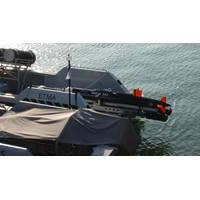
AquaPix MINSAS integrated onboard ATLAS SeaCat AUV
Synthetic Aperture Sonar and Real-Time SAS Signal Processor on the Atlas SeaCat autonomous underwater vehicle (AUV). Delivery is expected in September 2017. AquaPix is designed for operation on AUVs and towed platforms. The modular system uses the latest electronics, transducer arrays and signal processing software optimized for the demanding size, weight, power and cost constraints of unmanned maritime vehicles. SeaCat is an approximately 3 meters long and 280kg (depending on configuration) mid-size, modular, hybrid AUV that provides remotely operated vehicle (ROV) and AUV capabilities "as
Kraken Wins Repeat AquaPix Contract
SAS Signal Processor on the customer’s autonomous underwater vehicle (AUV). Delivery is expected in Q3, 2017. AquaPix is designed for operation on AUVs, manned and unmanned surface vessels and towed platforms. The modular system uses the latest electronics, transducer arrays and signal processing software optimized for the demanding size, weight, power and cost constraints of unmanned maritime vehicles. Karl Kenny, Kraken President and CEO said, “We are very pleased with this repeat contract award from a long-standing customer. AquaPix is an industry leading sonar system providing
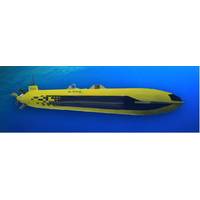
Kraken Wins $325,000 Sonar Contract from ECA Robotics
as a sonar system providing military grade technology that provides 3D seabed imaging, faster data processing and a lower cost. AquaPix is designed for operation on AUVs, manned and unmanned surface vessels and towed bodies. The modular system uses the latest electronics, transducer arrays and signal processing software optimized for the demanding size, weight, power and cost constraints of unmanned maritime vehicles. AquaPix generates bathymetry data (25cm along-track x 25cm across-track x 5cm height) co-registered and geo-referenced to the same pixel grid co-ordinates as the imagery. Operators
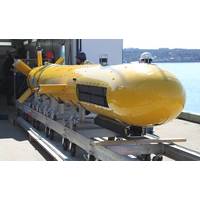
Kraken Assists Search for 1845 Arctic Shipwreck
bathymetric data with bin resolutions better than 10cm x 10cm and depth accuracy in compliance with IHO special order requirements. INSAS offers high resolution imagery at longer ranges than conventional side-scan sonar. This is done by replacing traditional sonar hardware with sophisticated signal processing software. The receive transducer array of INSAS is “synthesized” in software by the coherent recombination of many sonar pings overlapping an area of interest. Karl Kenny, Kraken President/CEO said, “We’re honored to be participating in the 2014 Victoria Strait Expedition
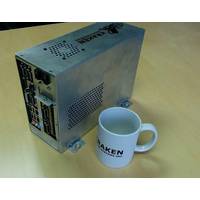
Kraken Delivers Real Time Sonar Signal Processor
unit. In essence, the GPU acts as a massively parallel embedded processor for Synthetic Aperture Sonar (SAS) data. SAS provides ultra-high seafloor image resolution at significantly longer ranges than conventional sonar. This is done by replacing traditional sonar hardware with sophisticated signal processing software. “We are very pleased to announce that we are now shipping our new RTSAS module,” said Karl Kenny, President and CEO for Kraken Sonar Systems Inc. “We’re continuing to build the performance innovations that our customers demand for their mission-critical sonar
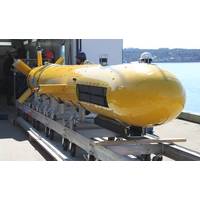
Kraken Delivers Sonar System to Canada Defense Agency
bathymetric data with bin resolutions better than 10cm x 10cm and depth accuracy in compliance with IHO special order requirements. SAS offer high resolution imagery at longer ranges than conventional side-scan sonars. This is done by replacing traditional sonar hardware with sophisticated signal processing software. The principle of SAS is that the receive transducer array is “synthesized” in software by the coherent recombination of many sonar pings overlapping an area of interest. This represents a major savings in sonar hardware and enables much higher resolution than is possible with
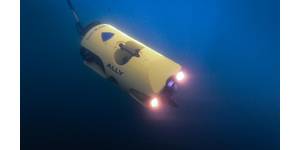
 February 2025
February 2025





